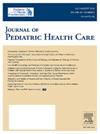急性淋巴细胞白血病儿童化疗过程中症状群的变化:一项纵向调查。
IF 2.5
4区 医学
Q2 HEALTH POLICY & SERVICES
引用次数: 0
摘要
背景:儿童急性淋巴细胞白血病(Acute Lymphoblastic Leukemia, ALL)与多种影响生活质量和治疗效果的症状相关。本研究旨在评估ALL患儿的症状进展,为有针对性的干预提供信息。方法:采用儿童记忆症状评估量表(MSAS-C)对2023年1月至2024年6月的ALL患儿进行不同化疗阶段的评估。结果:共纳入102例患儿,平均出现15.52次症状。最初,三种症状集群占主导地位:情绪、胃肠和躯体。随着化疗进入诱导期和巩固期,症状扩展到神经系统、自我形象障碍、皮肤和粘膜症状。维持期主要表现为情绪、胃肠、躯体、神经和自我形象障碍。结论:儿童ALL患者的症状群随化疗阶段的变化而动态变化,需要进行细致的评估和针对性的干预,以加强临床管理和患者护理。本文章由计算机程序翻译,如有差异,请以英文原文为准。
Changes in Symptom Clusters Over the Course of Chemotherapy in Children With Acute Lymphoblastic Leukemia: A Longitudinal Survey
Background
Acute Lymphoblastic Leukemia (ALL) in children is associated with diverse symptoms affecting quality of life and treatment efficacy. This study aimed to evaluate symptom progression in children with ALL to inform targeted interventions.
Methods
We assessed children with ALL from January 2023 to June 2024 using the Memorial Symptom Assessment Scale for Children (MSAS-C) at different chemotherapy stages.
Results
A total of 102 children were included and they experienced an average of 15.52 symptoms. Initially, three symptom clusters predominated: emotional, gastrointestinal, and somatic. As chemotherapy advanced through induction and consolidation phases, the symptom profile expanded to include neurological, self-image disturbance, and skin and mucosal symptoms. During the maintenance phase, the clusters were emotional, gastrointestinal, somatic, neurological, and self-image disturbance.
Conclusion
Symptom clusters in pediatric ALL patients change dynamically with chemotherapy phases, highlighting the need for meticulous assessment tailored interventions to enhance clinical management and patient care.
求助全文
通过发布文献求助,成功后即可免费获取论文全文。
去求助
来源期刊

Journal of Pediatric Health Care
NURSING-PEDIATRICS
CiteScore
3.40
自引率
10.70%
发文量
140
审稿时长
24 days
期刊介绍:
The Journal of Pediatric Health Care, the official journal of the National Association of Pediatric Nurse Practitioners, provides scholarly clinical information and research regarding primary, acute and specialty health care for children of newborn age through young adulthood within a family-centered context. The Journal disseminates multidisciplinary perspectives on evidence-based practice and emerging policy, advocacy and educational issues that are of importance to all healthcare professionals caring for children and their families.
 求助内容:
求助内容: 应助结果提醒方式:
应助结果提醒方式:


